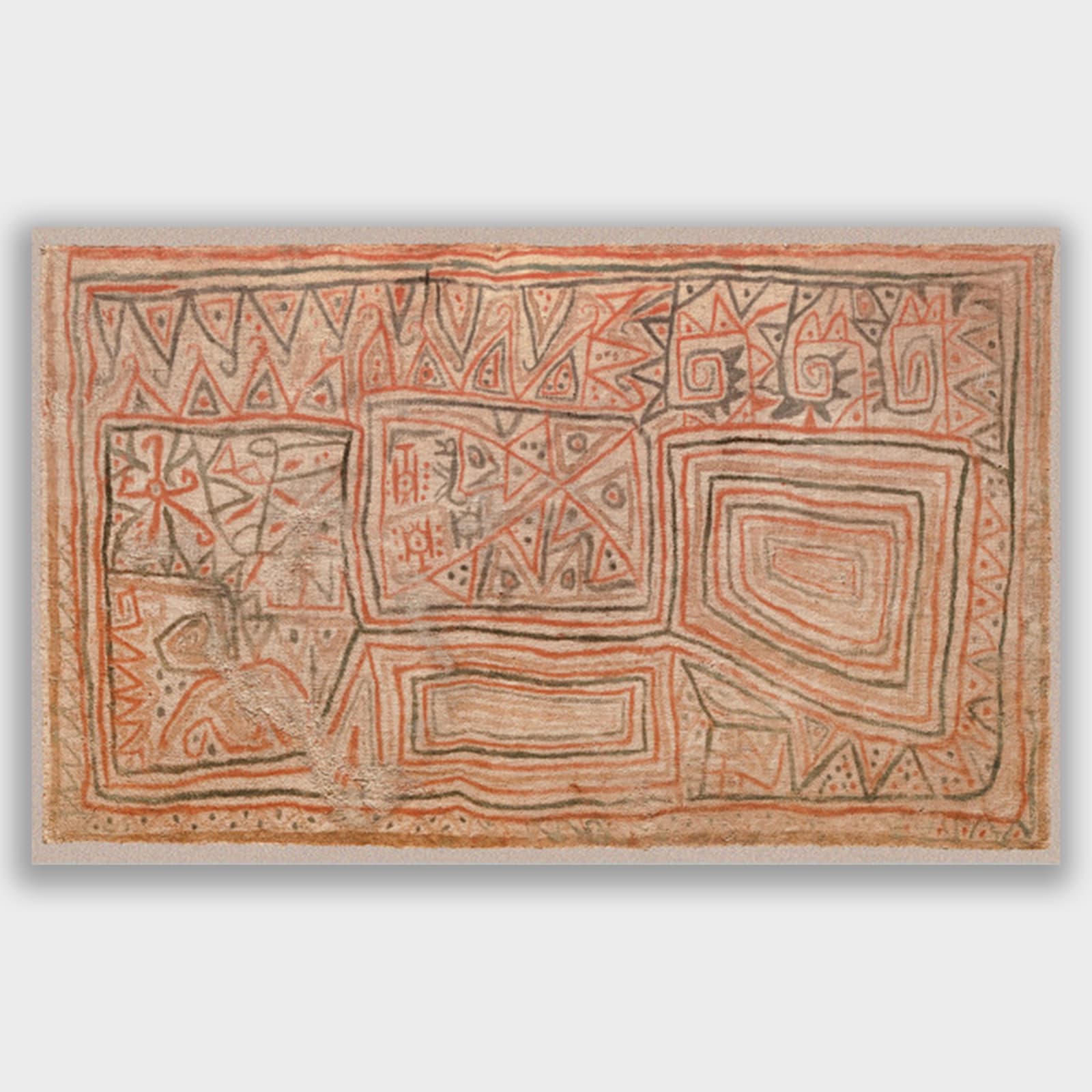





Huari Culture 100 AD-1200 AD
26,3 x 43,3 in
Further images
The ancient Andean artists were masters of comedy, perhaps divine comedy, which is epitomized in painted textiles from the Huari/Chancay culture. The practice of painted textiles has transformed into an abundant sense of humour with its free-of-perspective figurative rendering in the most delightful and childlike manner.
Many anthropomorphic renderings found in painted textiles, such as the two arms up-raised figures or the Janus headed centipedes are a continuation from the icon “the ocucaje object” of the Ocucaje culture in 100 BC. However, its method of execution--painted pigment on cotton-- allows a rather freestyle and celebratory manner of representation that is typical of the cultures.
The decorative elements surrounded the figures might refer to a diversity of patterns found in woven textiles in the pre-Columbian period. Similar examples could be found in the study collection of Anni Albers, an instrumental figure in the development of Bauhaus, American modernism and Fiber Arts throughout the 20th century. Anni made several trips to Mexico and Peru during her professorship in Black Mountain College, and helped built some of the most important Pre-Columbian collections in the U.S., such as the Harriet Engelhardt Collection in the 1950s, and the Josef and Anni Albers collection.
Exhibitions
Confluences: 4000 Years of South American Art, Cork Street no.9, London. 2022Continuities, 2000 Years of Femal Art in South America,Sala Brazil, London, 2023
Publications
James W. Reid, Pre-Columbian Peruvian Textiles: The First Modern Art, 2008, Editorial Industria Textil Piura S.A., page 245Join our mailing list
* denotes required fields
We will process the personal data you have supplied in accordance with our privacy policy (available on request). You can unsubscribe or change your preferences at any time by clicking the link in our emails.





